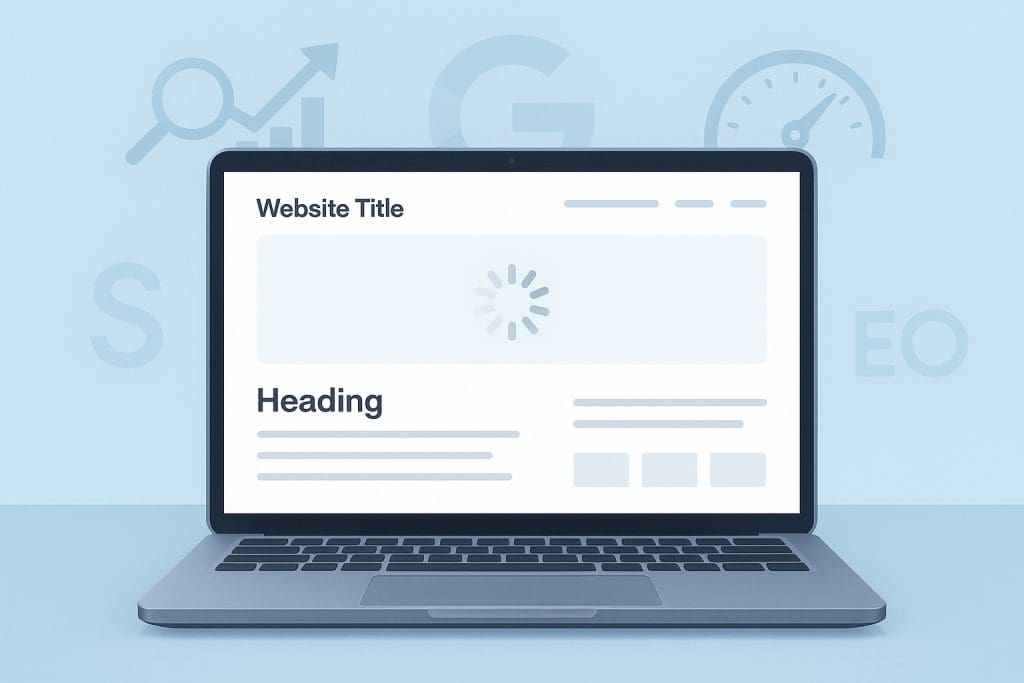Why Lazy-Loading Above-the-Fold Images Can Hijack Your LCP (and What To Do Instead)
Lazy-loading is a smart idea when used well — but if it’s applied too broadly, especially to above-the-fold images, it can actually slow your Largest Contentful Paint (LCP). Let’s unpack why that happens, how Google’s engineers are flagging the issue, and how you can confidently steer your site to perform better.
Google has flagged a common lazy-loading mistake that could impact your site’s SEO—find out how to optimise image loading for faster performance and better rankings. Share on XThe Problem: Default Lazy-Loading of Hero Images
In a recent episode of Google’s Search Off the Record podcast, developer advocate Martin Splitt shared a surprising performance pitfall they discovered on one of their own sites — developers.google.com. Their content management system was defaulting all images to lazy-load, including the main hero image seen immediately upon page load.
According to Splitt:
“If you are using lazy loading on an image that is immediately visible, that is most likely going to have an impact on your Largest Contentful Paint. It’s like almost guaranteed.”
Here’s why:
- Browsers normally prioritise above-the-fold content — especially prominent hero images.
- When
loading="lazy"is added, the browser delays loading the image until other page activity (like scrolling or other resource loading) triggers it. - This introduces a delay that can shift your LCP — the time it takes for the largest visible element to render — which can directly affect performance scores and perceived speed.
- On slower networks or lower-end devices, the delay becomes even more noticeable. If
widthandheightaren’t explicitly defined for that image, the layout might shift once the image finally loads.
The SEO Risk of Outdated Lazy-Loading Libraries
Splitt also pointed out that some lazy-loading libraries don’t properly assign src or srcset attributes to images during the initial load. Instead, they use non-standard attributes like data-src, which can confuse Googlebot when rendering the page.
He explained:
“We’ve seen multiple lazy loading libraries … that use some sort of data-source attribute rather than the source attribute… If it’s not in the source attribute, we won’t pick it up.”
This can cause Google to skip indexing those images entirely, even if they appear visible to users. The result? Your key visuals might not appear in Google Images or benefit from visual SEO enhancements.
What You Can Do Right Now
- Don’t lazy-load hero or above-the-fold images. Let these load eagerly. Make sure you’ve also set
widthandheightattributes to avoid layout shifts. - Use
loading="lazy"only for below-the-fold content. This is where lazy-loading shines — improving load time without delaying key visuals. - Check your plugins and libraries. Make sure they eventually populate image
srcorsrcsetattributes in the rendered HTML. If not, consider switching or updating the tool. - Use Google Search Console’s URL Inspection Tool. Don’t just trust the preview screenshot — check the rendered HTML to ensure image sources are correctly loaded and visible to Google.
So What About Rankings?
While Core Web Vitals do impact rankings, Splitt clarified that the weight is relatively minor:
“Core Web Vitals contribute to ranking, but … a tiny minute factor in most cases.”
Still, delivering a smooth, fast experience helps build trust and retain visitors — and that’s a big win regardless of where you land in the search results.
⏭ O’Brien Media-style Next Steps
- Audit your hero images: Are they accidentally marked
loading="lazy"? If so, remove it and explicitly define theirwidthandheight. - Use Search Console for visual verification: Confirm that your images are being rendered properly in Google’s view of the page.
- Let lazy-loading work where it should: Apply it to images and assets lower down the page where it improves speed without hurting user experience.
You’ve already done the work to get your site built and visible. Now, let’s give your users — and Google — the speed and clarity they deserve.
Read the original article on Search Engine Journal or Contact Us for SEO Advice and Support
